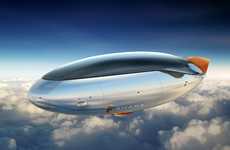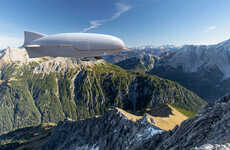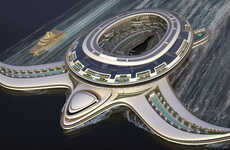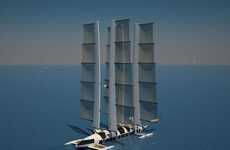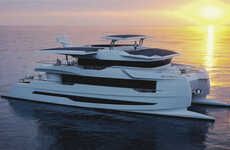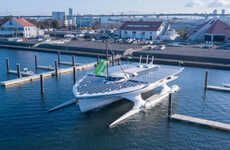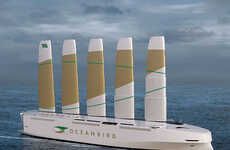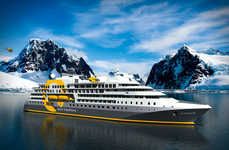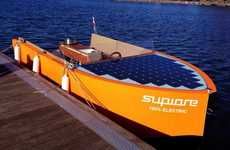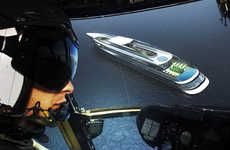
The Jaques Rougerie SeaOrbiter to Conduct Environmental Research
Tawanda Johnson — December 9, 2009 — Tech
References: seaorbiter & funkydowntown
A French inventor has designed the world’s first vertical ship. Why would the world ever need such a contraption, you ask? Well, the Jaques Rougerie SeaOrbiter will be used to conduct research on the link between global warming and the ocean. It will also provide an innovative view of underwater life.
The Jaques Rougerie SeaOrbiter measures a total of 167 feet high. In addition to a research area and an access deck for a maintenance area, the above sea level portion will also include an outdoor relaxation deck. The underwater level will be complete with a service deck for kitchen, storage and showers, living areas, labs and pressurized decks for divers.
The Jaques Rougerie SeaOrbiter measures a total of 167 feet high. In addition to a research area and an access deck for a maintenance area, the above sea level portion will also include an outdoor relaxation deck. The underwater level will be complete with a service deck for kitchen, storage and showers, living areas, labs and pressurized decks for divers.
Trend Themes
1. Vertical Ships - The invention of vertical ships opens up new possibilities for conducting research and exploration in the marine industry.
2. Environmental Research - The focus on conducting research on the link between global warming and the ocean opens up opportunities for innovative solutions and technologies to address climate change.
3. Underwater Life Exploration - Exploring underwater life from a new perspective provides potential for discoveries, advancements in marine biology, and sustainable ocean conservation efforts.
Industry Implications
1. Marine Exploration - The development of vertical ships creates opportunities for the marine exploration industry to expand their capabilities in research and underwater discovery.
2. Environmental Science - The research conducted on the link between global warming and the ocean opens up possibilities for innovation in the field of environmental science, including climate modeling, data collection, and ecosystem analysis.
3. Marine Technology - The need for specialized equipment and technology to support vertical ships and underwater research presents disruptive innovation opportunities in the marine technology industry.
5.2
Score
Popularity
Activity
Freshness


